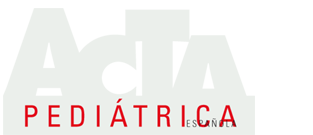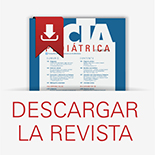Resumen
Objetivo: Describir la calidad de prescripción antibiótica en un servicio de urgencias pediátrico, antes y después de la realización de dos sesiones formativas sobre el «uso racional de antibióticos».
Material y métodos: Estudio descriptivo y retrospectivo de los pacientes dados de alta en urgencias durante el mes de enero de 2008, respecto a diciembre de 2008-enero de 2009. Se recogieron los datos sociodemográficos y relacionados con el diagnóstico y el tratamiento de los pacientes que recibían tratamiento antimicrobiano. Se valoró la posología y la indicación según las vías clínicas validadas de nuestro hospital. Entre ambos periodos, se impartieron dos sesiones formativas sobre el uso racional de antibióticos.
Resultados: En enero de 2008 se revisaron 5.989 informes de alta, y se pautaron antibióticos al 13% de los niños. En el segundo periodo se revisaron 6.359 informes, y recibieron antibióticos un 12,7%. Los diagnósticos más frecuentes fueron la faringoamigdalitis aguda (49,6%) en el primer periodo y la otitis media (39%) en el segundo. La indicación fue correcta en el 90,7% en el primer periodo, frente al 84,7% en el segundo (p <0,01), la dosificación fue adecuada en el 79,4 frente al 86% (p <0,01), y la duración fue correcta en el 88,6% en ambos periodos. Se prescribieron más antibióticos durante el turno de noche y en días festivos.
Conclusiones: El porcentaje de antibióticos prescritos es similar al de otras series. Tras las sesiones formativas sobre el manejo correcto de la antibioterapia, no ha disminuido su prescripción. Aunque se dosifica mejor, ha aumentado el porcentaje de indicación incorrecta. Serían necesarias más medidas para mejorar la calidad de prescripción antimicrobiana.














